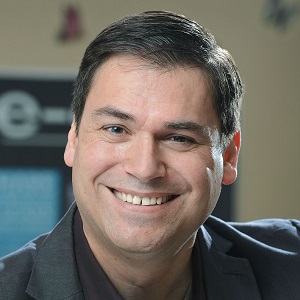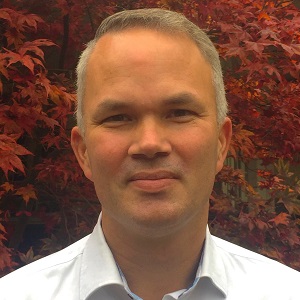Well, good morning everybody. This talk is not about me or my ego—what I actually do is help students and organizations who are truly inspiring and challenging the system. For example, I coach for ADA Scrum, applying Agile in the educational world. We train students so they can build incredible projects like exoskeletons in only six months. It sounds unbelievable, but they do it. They even beat MIT in a Hyperloop competition.
My purpose is to help people follow their dreams. Studies show that children as young as four years old start losing their creativity as they grow up in our education system. But we see people today, like Michael, who are still chasing their dreams and pushing boundaries to change the system—at least enough to tackle the challenges of our era. I use my knowledge and experience as a consultant to make this world a little bit better.
Washington State and the Netherlands
Next slide, please. This slide is about Washington State and the Netherlands. It may seem unrelated, but the image shows the Space Needle and tulips, highlighting our connection. Both regions are liberal and fight for their rights. The recent news has shown that Washington is a progressive state advocating for its values. Similarly, the Netherlands faces challenges with upcoming elections. Every time I visit, I feel at home. I consider myself a world citizen, and I believe in working together to make progress.
Legacy in Education
Innovation in education is actually close to home for me. In the 1940s, Case Booker invented a school system without hierarchy. In this model, children determine their own path to learning. For example, instead of a chemistry teacher simply explaining how concrete is made, students go to construction sites, speak with workers, visit factories, and document their findings on a Scrum board. The teacher acts as a facilitator rather than a lecturer.
We, as coaches, help them use Scrum and Agile principles—not just rigid methodologies—to guide their learning. There is already a global manifesto for ADA Scrum, with schools in the U.S., Europe, and beyond adopting Agile in education. My job as a consultant is to help adults unlearn outdated behaviors, but wouldn’t it be easier if we introduced an Agile mindset from childhood? That’s what gives me energy—finding visionaries like Michael who want to change the system and do amazing things.
Agile in Organizations
In the Netherlands, we see examples of self-management in action. For instance, a healthcare organization with 12,000 nurses operates with no management at all. Despite this, efficiency has risen by 200%, and costs have dropped by 50%. Employees feel engaged and empowered. This is one of the core principles of sociocracy—ensuring equality, not through directive management, but through encouragement and support.
Similarities Between the Netherlands and Seattle
Paul: "You talked about some of the similarities between the Netherlands and Seattle, but you left out a few. The Netherlands is known as the tulip capital of the world, and Washington is the tulip capital of the U.S. We also both have legalized recreational marijuana. I like to say we go from 'bulb to bud!'"
Michael: "Thank you, Michael."
Paul: "You're welcome. We're rocking it!"
Self-Management in Government
Michael: "Okay, I’m embarrassed right now. Please go ahead."
Paul: "Thank you, Paul. A little more about myself—I am the Deputy CIO for the state of Washington. While that is my title externally, within the organization, my authority comes from the various roles I fill, which are publicly available in our org structure. I work at WaTech, Washington’s central IT provider, a team of about 600 passionate professionals committed to improving government and making a difference in our community."
"One of our biggest challenges was frustration over projects taking years and costing tens of millions of dollars. The legislature was particularly frustrated. We already practice Agile and Lean, but the existing organizational system was an impediment to true transformation. This led me to test a hypothesis: Can self-management improve state government efficiency while also making us a more attractive employer?"
The Hypothesis
- Can self-management improve state government’s effectiveness in delivering better outcomes for citizens?
- Can self-management increase our employee value proposition despite lower salaries?
We began this journey a few years ago, learning about self-management through the Agile community. Paul and I connected early on, and we partnered with Harvard Business School researchers who were interested in our experiment. We started with a small Agile team exploring self-management and saw promising results.
We then scaled up the experiment to include 300 employees—half learning self-management, half serving as a control group. The Harvard researchers have been analyzing both teams over a 12-month period, and we’re now nearing the end of that study."
Bureaucracy: The Good and the Bad
Michael: "Now, I want to put a different spin on bureaucracy. Bureaucracy, at its core, is not a bad thing. Max Weber coined the term in the late 1800s, defining it as a decentralized authority designed to prevent any single leader from holding too much power. It gave us the industrial era and mass production. However, its traditional form focused on repeatability, consistency, and predictability—values that don’t resonate in today’s fast-changing world. What we need now is adaptability."
"A Harvard Business Review article described Holacracy as ‘Bureaucracy 2.0’—a new approach that maintains distributed authority but allows organizations to be much more adaptive."
Measuring Success
Paul: "We’ve been running this experiment for almost two years, and we already have data. Initially, it took about 20 minutes to identify, discuss, and resolve an issue. Now, it takes under two minutes. In one-hour meetings, we routinely resolve 20-30 issues, with a record of 34 in a single session."
"We also measure empowerment. Initially, 60% of employees felt empowered to resolve their own issues. That number is now at 90%, a 50% increase. Additionally, job candidates are willing to take a $10,000 to $28,000 pay cut to work in this self-managed environment. If extrapolated across state government, this could represent a $10 million value proposition."
Where to Start
Paul: "If you’re considering self-management, here’s what worked for us:
- Take an incremental approach—don’t attempt radical transformation overnight.
- Find the right leaders to advocate for the change—it’s an ongoing battle.
- Build a coalition of support—our success depends on backing from the state CIO, governor’s HR office, attorney general, and even unions.
- Measure outcomes—we track team maturity in self-management and identify opportunities for improvement.
- Find quick wins—start with teams that are open to change and build momentum from there.
"That’s our journey so far. Thank you."






